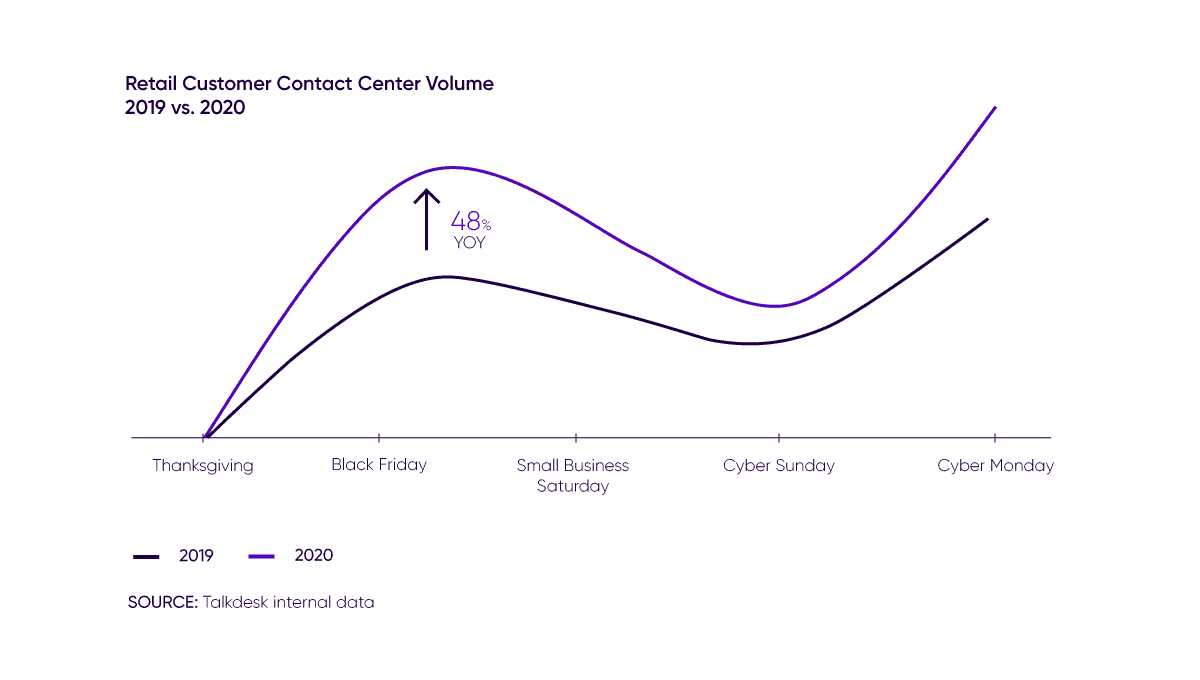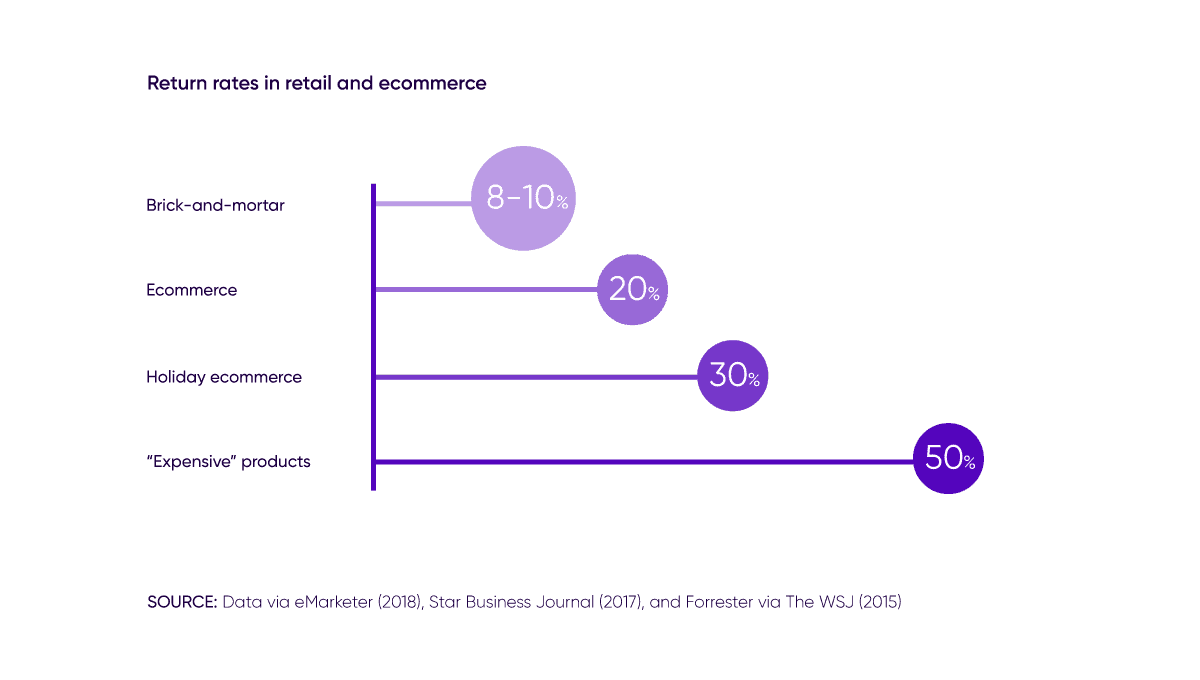What our data is telling us about how retailers can reduce holiday return volume

By Duane Peck
0 min read

A 10-year acceleration in ecommerce buying driven by the pandemic, in combination with the seasonal spike in gift buying, is about to create an unprecedented volume of holiday retail returns. Salesforce estimates that approximately 30% of all global holiday purchases in 2020 will be returned—about $280 billion worth of lost merchandise sales.
Salesforce also forecasts a 30% increase in service demand for the 2020 holiday season. But that forecast could be on the low side for some retailers. Talkdesk analyzed contact volume from a representative group of our retail customers over the “Cyber Five” holiday shopping weekend (Thanksgiving through Cyber Monday) and found a 48% total increase year-over-year:

Why so many returns this year? For one, ecommerce orders are up to three times more likely to be returned than in-store purchases. Customers have developed different expectations for online shopping.
Years of fast and convenient returns for online purchases have created permanent habits, such as purchasing multiple sizes of apparel in order to return those that don’t fit:

To minimize the financial impact on your business, here are three areas of focus to reduce holiday return volume:
1. Provide a great post-purchase customer experience.
Research has proven that one of the best return prevention methods is to provide an outstanding post-purchase experience. This can include personalized email, proactive outreach or even surveys that provide an immediate feedback loop with insights into customer satisfaction (CSAT).
For brands with high-end items, consider a policy that implements a personal touchpoint from one of your customer care representatives shortly after the sale. This helps offset buyer’s remorse in the days following a high ticket purchase and helps build long-term loyalty. The same applies to customers who have joined your loyalty program for the first time over the holidays. The onboarding experience for new members should be as high touch and personalized as possible.
Likewise, you should encourage new shoppers to join your customer community if you have one or to participate in your Facebook and Instagram pages.
2. Optimize product listings, images and descriptions.
For most retailers, there’s still an opportunity to improve discovery, evaluation and overall product experience. This starts with your product pages. A great product page with detailed images, compelling copy and exhaustive descriptions not only helps drive conversion but also helps customers make more informed purchase decisions to prevent returns. “Item not as described” is consistently one of the top reasons for online apparel returns.
An investment in detailed photography helps to provide additional context so shoppers can make better evaluations and common features like sizing guides and reviews offer useful social proof along the customer journey.
3. Eliminate unforced errors.
The holiday season leads to an expected spike in return volume, but the reality is that nearly two-thirds of returns throughout a given year are due to retailer error. These errors can include poor packaging that leads to damaged items, in-store pickup mixups and simple picking and packing errors during fulfillment, just to name a few.
A thorough examination of your data will help identify problem areas to be corrected. Understanding your overall return rates and the breakdown of your return codes by category will help you identify problem areas for remediation. Products with poor reviews, or those with disproportionately high return rates, are obvious areas to start. In a similar vein, it can help to identify the customers with higher-than-normal historical return volumes so that you can strategize a more personalized mitigation approach or identify those customers that could be abusive of a generous returns policy.
On the topic of customers, you’ll also want to make sure your overall communication strategy is on point. For example, if you are expecting shipping delays and want to ensure earlier than normal purchases, make sure this information is included in your regular email cadence and prominent on your website. Receiving an item too late such that it can’t be given as a gift is an obvious reason to make a return.
While these tips can help focus your preparation to minimize the financial impact on your organization, returns should be viewed as a significant customer touchpoint and an opportunity to differentiate your brand. A 2020 study by the Baker Retail Center at the University of Pennsylvania found that handling returns well builds loyalty and notes that best retailers use returns as an opportunity to encourage cross-selling or exchanges as appropriate.









